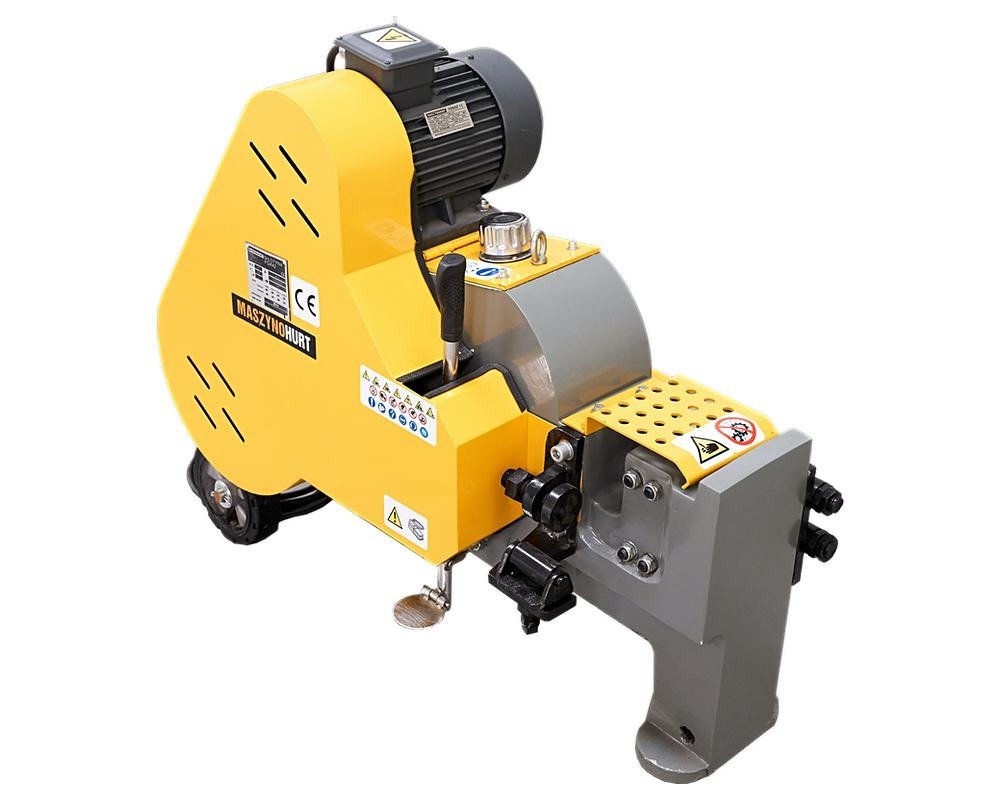Introduction to guillotine, rod cutters
A guillotine and a bar cutter are two popular machines used in the construction and metalworking industries. Both of these machines are used for precision cutting of materials such as steel bars, sheets or pipes. In this article, we will take a closer look at both the guillotine and the bar cutter, their applications and cutting techniques.
Types of cutting machines: guillotines and shears
There are various cutting machines available on the market, among which we can distinguish guillotines/cutters and manual guillotine shears. Each of these types of machines has its own unique features and applications, which we will discuss below.
Guillotines/cutters are machines that use a blade that falls vertically to cut materials. As a result, guillotines are able to precisely and quickly cut a variety of materials, such as sheet metal or steel bars. Depending on the model, guillotines can be equipped with different drive systems, such as hydraulic, pneumatic or mechanical.
Manual guillotine shears are tools that also use a vertical cutting blade, but are operated manually. They are lighter and more portable than guillotines, making them ideal for smaller construction sites or workshops. Manual guillotine shears are ideal for cutting materials of smaller thicknesses, such as thin sheet metal or rods.
Use of guillotine and shears in the construction industry
Cutting machines, such as guillotines and shears, are indispensable in many areas of the construction industry. Among them can be mentioned:
- construction machinery – cutting structural components such as rebar and sheet metal,
- Cranes, hoists – support the cutting process by lifting and moving heavy parts,
- Power tools – the use of drills, grinders or saws to cut bars and sheets,
- Roofing – cutting roofing sheets, gutters or fasteners,
- Paving – cutting ofpaving stones, paving slabs or edging,
- Concrete and reinforcement work – cutting rebar, rebar sheets orconcrete elements.
Techniques for cutting bars and sheet metal
Depending on the type of material and the requirements for precision and speed of cutting, different cutting techniques can be used. In the case of steel cutting, there are several methods that allow for the fastest cutting with the right mm of cut thickness and cutting range:
- Plasma cutting – fast and precise cutting of steel plates and sheets with a plasma jet,
- Laser cutting – using a laser beam to cut steel sheets with high precision and clean edges,
- Water cutting – the use of a high-pressure water jet to cut steel sheet, sheet metal and other materials.
Safety and operation of cutting machines
When working with cutting machines such as guillotines and shears, it is extremely important to follow machine safety rules. Keep in mind:
- moving the sheet metal – using appropriate techniques that facilitate light movement of the sheet metal and minimize the risk of damage,
- bar alignment – correctlypositioning the bars on the machine to ensure even cutting and avoid damage,
- Automatic lubrication – taking care of regular lubrication of cutting machines, which allows them to last longer and perform better.
Advantages and disadvantages of the guillotine compared to rod cutters
Choosing the right tool for cutting bars depends on individual needs and requirements. Comparing the advantages of a guillotine with other tools, such as template shears, roller shears and guillotine shears, one can see differences in precision, speed and applications:
- Guillotine – high precision cutting, speed and the ability to cut thick materials, but more weight and required power supply,
- Stencil shears – good for cutting curved shapes, but less precision and speed than a guillotine,
- Roller shears – ideal for cutting thin sheets, but limited use for thick materials,
- Guillotine shears – portable and easy to use, but limited to cutting materials of lesser thickness.
